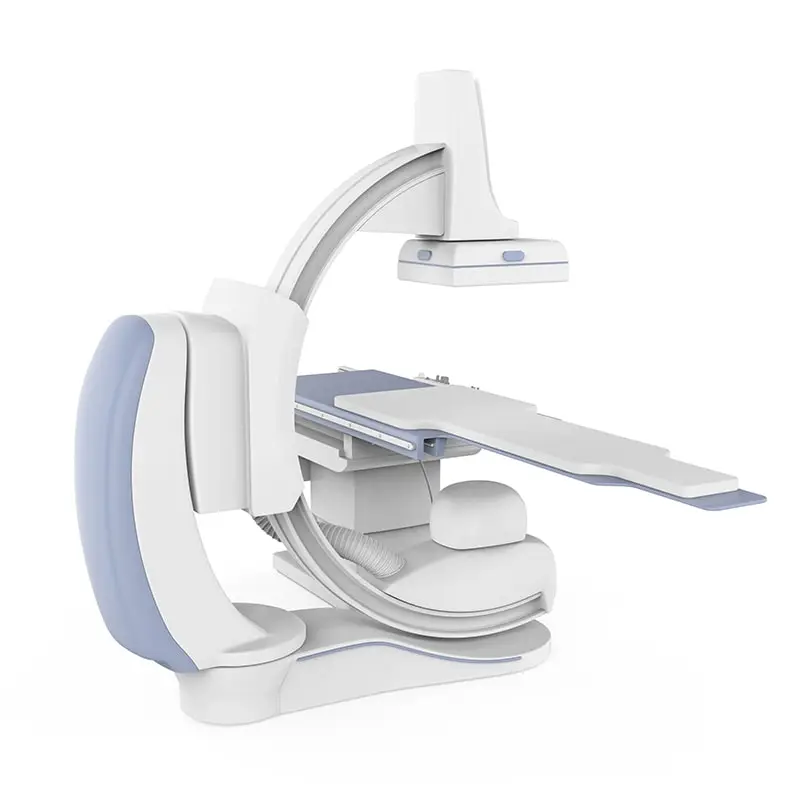A C-arm X-ray machine is useful in interventional pain management because it guides needle placement for accurate injections and drug delivery. Radiation exposure is a significant concern for doctors and physicians due to the increased use of C-arm fluoroscopy during various procedures. It is well known that ionizing radiation has harmful biological effects on the human body. This makes it necessary to limit radiation exposure.
Among the most effective radiation protective devices for interventional procedures are lead aprons with thyroid shields. This alone cannot guarantee the operator’s safety from radiation. A higher risk of radiation exposure is also associated with improper care and the use of radiation protective devices. Let’s discuss whether your C-arm X-ray machine needs shielding.
Avoid getting high radiation exposure by keeping your C-arm X-ray machine up-to-date on maintenance. Get in touch with us today!
Why do you need shielding?
The EPA requires that all personnel present in the room during fluoroscopic procedures be protected from scatter radiation by whole-body shields or radiation protective clothing. Shielding can help protect X-ray employees from external radiation exposure as they are constantly exposed to radiation. Shielding is generally accomplished through lead shields. However, research has shown that polymer-based radiation shields are lightweight, low-cost, and non-toxic in comparison to lead. New applications of silicon in shielding, for example, will have a significant impact on industries and economies.
How can doctors protect themselves from C-arm X-ray machine radiation?
- Wearing lead aprons or similar radiation protection is imperative to protect medical workers from radiation.
- In order to use a C-arm X-ray machine, 0.5mm lead (or equivalent) is usually required. As a result, the scattered X-ray beams will be attenuated. Radiation can be particularly damaging to certain parts of the body. Protecting these parts is therefore essential.
- A volunteer wearing the safety equipment can be scanned with the X-ray image intensifier to ensure that the radiation dosage is accurate. You can then examine the image of the X-ray taken by the C-arm machine for cracks and imperfections. If you see any problem with the image produced, there is a possibility that the radiation produced by the machine isn’t right.
- During storage, radiation shields shouldn’t be folded as this compromises their lead protection.
- Radiation intensity decreases with increasing distance. Researchers recommend a 2-meter safe zone around the C-arm system.
- Similar principles should apply to the position of the C-arm. The radiation exposure to the surgeon during fluoroscopy is greatest when it is performed horizontally. It is recommended that the X-ray source be used from the medial to the lateral direction, although the position differs depending on the procedure.

What are the biological effects of radiation exposure?
Radiation exposure has two primary biological effects: 1) deterministic and 2) stochastic. Hair loss and skin burns are deterministic effects that stop occurring when they reach a threshold value. Therefore, reducing the dosage below the threshold dose will have no side effects. Opacity and cataracts have been associated with deterministic effects.
Carcinogenesis and teratogenesis, for example, are stochastic effects that cannot be reduced. Since stochastic effects have no threshold, radiation may cause side effects to the operator. These side effects are more likely to occur as the exposure dose increases. Radiation causes about 2% of all cancers. When fluoroscopy is not used appropriately, it can result in high radiation exposure and increase the risk of cancer.
What are the significant sources of radiation exposure during C-arm fluoroscopy?
Direct exposure to radiation from the primary X-ray beam is not the only source of ionizing radiation exposure; scattered radiation reflected from the patient’s body and radiation leakage from the X-ray tube are also factors. Unless the operator places their hand in the irradiation area, there is no danger of being exposed to the primary X-ray beam. Due to the lower level of leakage of X-rays, this radiation does not significantly harm the practitioner. The main source of radiation exposure for medical staff is scattered radiation.
A primary X-ray beam produces scatter radiation when it interacts with the body of a patient. Radiation exposure is therefore heavily influenced by the proximity between the operator and the patient. The doctor usually stands close to the X-ray tube while examining the patient. As a result, they are often exposed to scatter radiation. When doctors use a C-arm X-ray machine, scatter radiation is a major concern.
You can also help reduce radiation exposure by having your C-arm X-ray machine repaired on time. If the X-ray image quality is poor, the radiologist must increase the radiation dose in order to obtain a clear image. Patients and staff can be adversely affected by this method. Regular maintenance will reduce the risk of high radiation exposure by allowing quality images to be taken with lower radiation doses.
Ready to give your equipment the care it needs?
When you work with 1904 HTM for X-ray repair and service, you’re working with a team of committed experts. Our combined experience of 50 years enables us to ensure your C-arm X-ray machine works at its best, minimizing radiation exposure. We serve the Puget Sound area including Portland, Seattle, and Tacoma. You can focus on taking care of patients while we take care of your equipment. Has your C-arm X-ray machine been acting up lately? Contact us today!